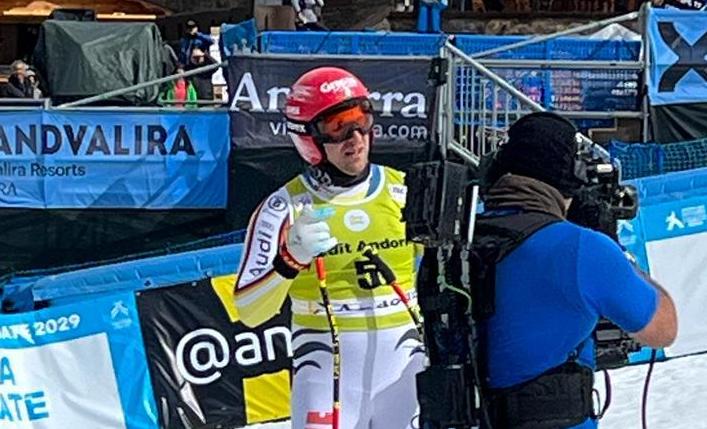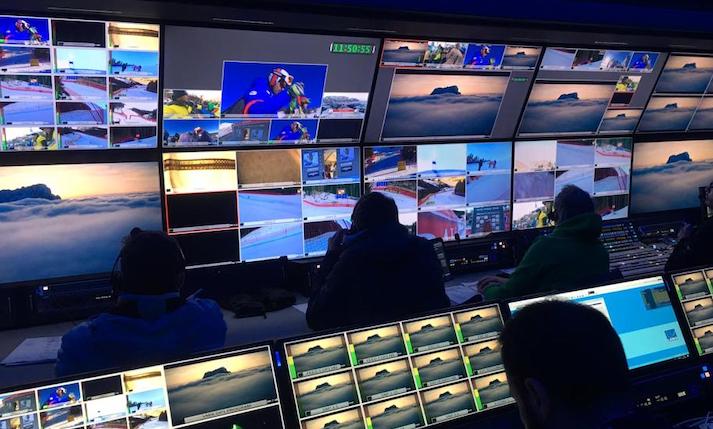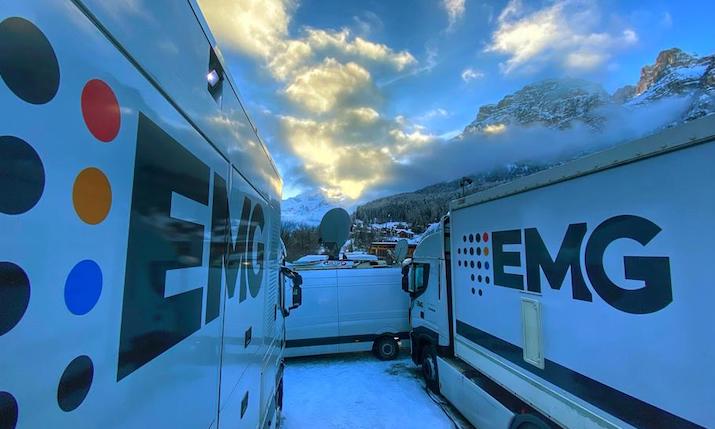Behind the scenes of the Alpine Ski World Cup with EMG Italy

New cameras were used to enhance storytelling at this year’s events
The finals of the FIS Alpine Ski World Cup were held in Soldeu, Andorra, from 15-19 March, with EMG Italy on hand to handle the production, working alongside Infront.
“Alpine skiing closes the year of ski competitions,” says Davide Furlan, outdoor production director of EMG Italy. “It hasn’t been an easy year thanks to the weather conditions, with a dry climate, limited precipitation and, above all, temperatures that are too high for snow and for keeping the snow frozen.”
In fact, two legs of the men’s International Ski and Snowboard Federation Alpine Ski World Cup due to be held in Garmisch-Partenkirchen in January had to be cancelled due to a lack of snow.
The production calendar by numbers
Despite this, EMG Italy produced 27 World Cup events this year, covering alpine skiing, Nordic skiing, Nordic combined, ski cross and snowboarding in the most evocative and demanding slopes of the Italian and French Alps.
The Nova 103, Nova 126, Nova 128, Nova 150 and Orion 209 OB trucks were all called into action and the numerous tracks of the different disciplines were literally littered with cameras.
Between December and March, EMG teams worked on 12 alpine skiing events, four Nordic ski and Nordic combined events and 11 freestyle and snowboard events, amounting to 100 days of production. During this time, more than 400 cameras were transported and installed on the slopes and more than 140km of optical fibres were laid out. Some 1,080 people worked on the events.
You can’t improvise on the slopes
Furlan continues: “The 15 years of experience of World Cup productions that the technical teams, production and the booking department have allowed us to face this period in a structured and co-ordinated way. Every single role is covered thanks to the teams of internal employees and above all specialised freelancers, who are selected and hired by EMG’s expert producers.
“EMG has always pushed for safety in the workplace and we have found Infront to be a very attentive and sensitive customer on this matter.
“Over the years, the work of raising awareness towards the organising committees has led to remarkable results in terms of the safety of the infrastructure on the slopes.”

Inside the gallery
He adds: “We should be proud of the standard achieved today. It corresponds to a high level of awareness on the part of the workers, achieved thanks to training courses organised by EMG and those self-managed by the individual professionals: whoever wants to be part of these highly specialised teams is aware that they cannot improvise as a camera operator or a technician on the slope; certifications for work at height and adequate PPE are required.”
The new storytelling
This year’s winter sports coverage has seen the inclusion of some innovative new technologies to enhance the storytelling. Perhaps the most evident was use of DJI’s FPV drone, which was engaged in various disciplines of Alpine skiing, ski-cross and snowboard-cross. It offered POV vision and was employed by an operator who has achieved aerobatic certifications.
This type of shooting made it possible to bring the viewer directly onto the track and gave them the impression they were descending with the athletes.
Other production innovations included the positioning of numerous HFR cameras along the slopes, to capture the athletes’ stunts and movements. Replays from these cameras not only offered more excitement for viewers, but they also bought additional commercial benefits as they ensure advertisers’ logos remain on the air for many seconds.
Live from the slopes
Flavio Baggio, producer and technical set-up track co-ordinator of EMG Italy, says: “This year we did a great job in every production event, even if, as always, there were difficulties.
“The environment in which we moved and worked, with techniques based on complex electronic circuits, has unique features. In skiing, first of all, the danger is very low temperatures; but, absurdly, even the heat or the wind and the fog are harmful and impose constantly changing conditions.”

“Knowing how to constantly adapt and react immediately are essential conditions to guarantee the proper functioning of all the electronics set up along the slopes,” he continues.
“The people who work with EMG Italy are mountain experts, they have great experience and a spirit of adaptation and sacrifice: without them, any production would be impossible to achieve.
“We went through heavy and abundant snowfalls that covered all the fibre sections; the very strong wind could have knocked down structures and anchored scaffolding; and then, the high temperatures melted the snow and transformed the canals where the camera cables passed into rivers.
“Only thanks to the foresight of experience have we always managed to go on air correctly, without any technical shortcomings or flaws: I must say thanks to my teams, true professionals.”
The season finale
At Soldeu, two XXL vehicles were used for the production of all Alpine disciplines, the downhill, giant slalom, the Super G, slalom and the Mix Team Parallel Event.
Nova 126 was used to cover the fast disciplines, complete with 28 cameras and five EVS XT3 ChannelMax servers.
The crew consisted of 52 technicians, together with the Infront editorial team, led by Daniela Calandra, head of winter sports at Infront Production Italy, and two directors, Sandro de Manincor and Franco Scotton.
The set-up of the El Tarter track in Soldeu was designed by the technical and production crew of EMG Italy. This had to take into account the daily change of configuration between the men’s race in the first part of the morning and the women’s race in the second, which meant changing camera positions at the start and in the first part of the race.
EMG also produced footage of the technical disciplines, the giant slalom, the special and the team parallel, from the Grandvalira slope in Soldeu.
“Here we placed 26 cameras along the track and here too the configuration change took place four times a day, with about 15 minutes available between one race and the next. It was an immense commitment which, without precise co-ordination, would never have worked,” Baggio adds.
In total, Soldeu involved a total of 64 technicians with two large OB vans across 15 days of production on two different tracks about 4km apart.

